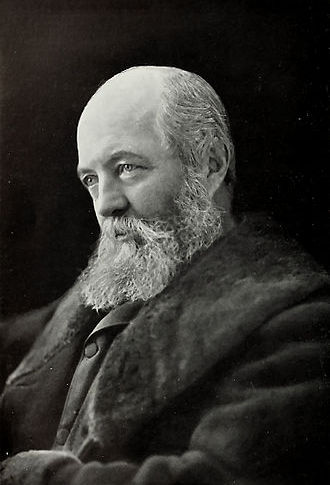
About

In 1858, Frederick Law Olmsted and Calvert Vaux won a competition to design Central Park in New York City, beating out 32 competitors. Acclaimed British architect Vaux took a chance on Olmsted, because he was impressed with his ideas. Olmsted had never designed a park or landscape before. In fact, he had never even attended college. His admission to Yale had to be surrendered when his eyes were weakened by sumac poisoning.
Olmsted's designs inhabited the social consciousness and beliefs that nature is restorative, common green space should be equally accessible to all and defended against private interests, long before public parks were part of our American cities. Because of his principles, tenacity in appealing to political leaders, and the discipline of scribing and recording the reason and theory behind his designs, Olmsted went on to become known as the father of American landscape architecture.
Frederick Law Olmsted Sr., Nancy Olmsted Spanovich's great-great uncle and the father of landscape architecture

" As one of the 'father' of landscape architecture's direct descendants, I always look for ways to advance the practice of restoring urban environments to revitalize communities. Getting certified as a Revitalization and Resilience Facilitator by the RECONOMICS Institute was a perfect fit, since it integrates the renewal of our natural, built, and socioeconomic environments",
"While at U.C. Berkeley, I served on the Board of
"Friends of the Frederick Law Olmsted Papers" and under Charles Beveridge's leadership and the generosity of Sylvia McLoughlin (widow of the McLoughlin mining tycoon, George McLoughlin), I learned of the profoundly important concepts and principles Olmsted observed and recorded that have become a foundation for landscape architecture as a profession. As well the many letters and funding appeals that he undertook that are essential to park development and preservation for public access and use." N. Olmsted Spanovich, RE, scientist and founder of Olmsted LegacyTM.
Our company takes an integrated approach to environmental policy and regulatory considerations in architecture and engineering, energy, and infrastructure projects. We help clients protect water quality and wetlands; use native vegetation for livable open space and park lands; incorporate social justice and equity in park design; enhance fish and wildlife habitat; and manage sustainable water, energy, and ecosystem resources.
Our clients build communities and transportation systems; protect and restore wetlands and watersheds; mitigate environmental impacts; and develop greenfield and brownfield properties, including eco-districts or smart cities.
Taking a balanced and collaborative approach that saves her clients money, she finds elegant solutions to solve environmental issues. Olmsted Legacy incorporates the best from all disciplines into a wholistic decision-making framework, helping clients arrive at the right direction for their projects. Thorough communications along every step of the project result in no surprises.
As a certified women and disadvantaged business enterprise (Certification No. 9281 State of Oregon), we aim to balance our planet’s energetic equation in everything we do, restoring ecosystems and revitalizing communities.
